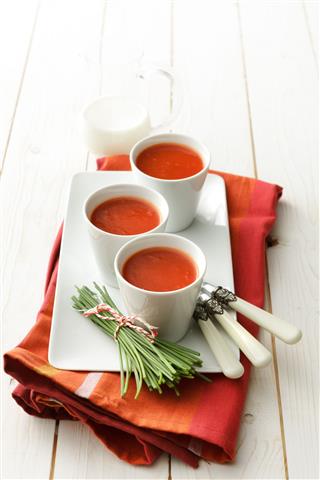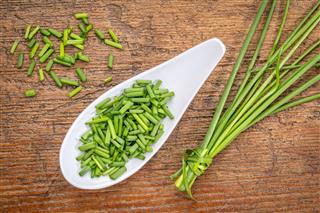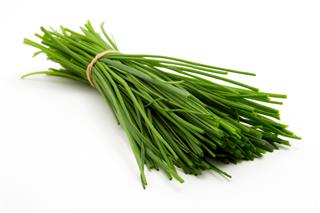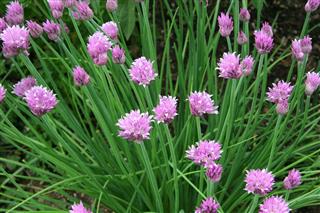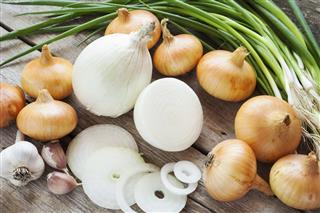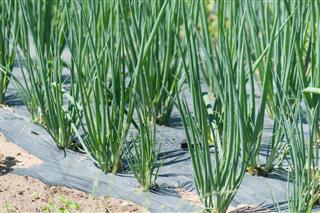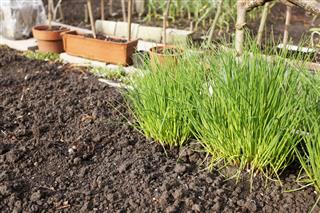
Chives and green onions bear semblance to one another, however, are chives and green onions the same? What are the differences? Let’s take a look…
Did You Know?
Peter Glazebrook, a 68-year-old farmer from Newark, has bagged the Guinness Book of World Records for the world’s largest onion―weighing 18lb 1oz.
With the onion family being so large, and so many different species and subspecies, it’s not easy to spot the difference between various members like green onions, scallions, chives, shallots, leeks, etc. As a result there’s such a lot of confusion with regards to their identification. What makes it even more confusing is that restaurants often use them interchangeably in the dishes.
While all belong to the same onion family, they have their differences. In this particular article, we’ll be dwelling upon only the thin line of difference between green onions and chives. While both chives and green onions are added over baked potatoes, eggs, etc., they aren’t one and the same. Let’s take a look at their distinguishing factors.
Chives Vs. Green Onions
| Parameters | Chives | Green Onions |
| Appearance | Hollow, thin, long, green blades | Green stalks with bulbous onions |
| Flavor | Very delicate onion flavor | Mild onion flavor |
| Thriving Period | Summer and spring | Early spring |
| Species | Allium fistulosum | Allium schoenoprasum |
| Culinary Use | Garnish or flavoring agent | As a whole ingredient |
| Harvested For | Stalks | Bulbs |
| Consumed Form | Raw | Raw or Cooked |
Chive and Green Onion Difference
Appearance
In the United States, green onions and scallions may be used interchangeably, however, they are not the same. Green onions have long, slender, green stalks that end in small, white onion bulbs. Chives on the other hand, although part of the bulbous onion family have inconspicuous bulbs. The bulbs are so tiny that they almost pass off as non-existent. Their green stalks are long, tender, and hollow, and resemble grass blades.
Botanical Difference
While green onions belong to the genus and species: Allium fistulosum, chives belong to the genus and species Allium schoenoprasum. In fact, chives forms the smallest species of the onion family. Moreover, chives are perennials, which means they return year after year, while green onions are annuals that need to be harvested as soon as the stalks turn brown and fall over.
Harvested For
Green onions are mainly grown for their tender white bulbs, rather than their green stalks. Chives on the other hand, are harvested for their flavorful stalks, because their bulbs are poorly developed.
Part Used
Chives have weakly developed bulbs, with only their green stalks being used for culinary purposes. The stalk is snipped and used as a garnish on various dishes, while the bulbs are discarded. Thus, in chives the underdeveloped bulbs are inedible. However, their purple flowers are also edible and often added to salads and as garnish. In case of green onions, both the tender white bulbs as well as the green stalks are edible.
Flavor
Both the stalk and bulb have a mild onion flavor, and can be eaten raw or can be sautéed before adding it to different dishes. Chives on the other hand, come with mild onion- or garlic-like flavor. They are mainly snipped raw and added to dishes to give the dish an oniony flavor without having to add onion pieces to it. However, cooking them will destroy their flavor, which is why they are snipped raw. They may even be dried and used as a flavoring.
Uses
Chives are used mainly for seasoning salads and flavoring pancakes, cottage cheese, stews, sandwiches, fish, soups, eggs, etc. In Japan, they are used for seasoning several dishes, while in Poland they are served with quark cheese. They also make lovely garnish when snipped raw over deviled eggs. Green onions on the other hand can be consumed raw after slicing or can be added to salads and sandwiches. Diced scallions are used in soups, seafood recipes, noodle preparations, etc.
Thus, although both belong to the same onion family, both chives and green onions are different, and are used slightly differently in the kitchen. So, the next time you go shopping for these greens, hopefully you’ll have a better idea as to what you’re looking at!
